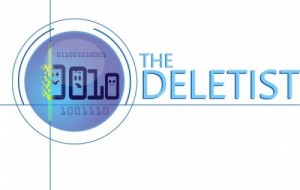Hanna adjusted her goggles. It had been a rough night. First she lost Bean’s body. Even worse was the way she lost it. She watched it get sucked into the inky ooze that used to be the ocean. The waters now so congested with plastics, filth, and rampant growth of undesirable organisms, even the waves couldn’t break through. Every once in a while something tsunami-like came along. The strength in it enough to dredge up a sticky, viscous sludge from the depths, dumping and spewing on everything in its path.
She shook her head to clear the thoughts. Ater that horrendous “rescue” mission, she needed her recharge time. The lost body, the failed search after in Bean’s house. She knew there hadn’t been anything to find. If there was, she would have found it. Hanna felt sure about this, but her boss didn’t share this confidence. Hanna could still hear the gruff voice barking her ID number along with a few expletives and artful descriptions of her ineptitude. Yes, Hanna decided, they were artful descriptions. Yet, not important in this moment.
After adjusting the goggles Hanna used her feed to review the Augmented Reality options. After being so close to what used to be the ocean she definitely wanted a salt-water theme. She only had a vague recollection of what the beach used to be like. Even as a child the beach always had trash on it, bad smells, and loamy looking sand patches. But at least the waves had been there, lulling her with their relentless shushing.
Honing in on salt water options, Hanna decided she wanted a colder water theme. She whizzed through some of her favorites. Swimming in Antarctica among the ice bergs and penguins. Or the Pacific Northwest among kelp forests, otters, whales, seals, and other marine life. Sometimes she preferred the cold, gray icy waters of the North Sea. Too harsh to visit in person, but just right to work out tension in the Endless Pool.
Tonight, however, she opted for colors and animal activity. Hanna selected Ketchitan, Alaska. She set the pace on her Endless Pool and stepped in. Goggles in place, the pool magically transformed into the Alaskan coast line rife with curious fish and kelp forests swaying gentlly under the dappled sun rays. In the distance she could see humpbacks gliding beneath the surface. She got on her stomach and started swimming.
